- Home
- Patricia Cornwell
Chasing the Ripper (Kindle Single) Page 2
Chasing the Ripper (Kindle Single) Read online
Page 2
“To tell you the truth . . .” I began hesitantly because I rarely was honest with her about my feelings.
It wasn’t my habit to admit to Esther or to my publisher at the time, Phyllis Grann, that I was ever uneasy or remotely insecure about what I was doing. I didn’t want to let them know I was sorry about the contract I’d just signed. The two women were the big shots in my professional life and had faith in me. If I said I was investigating Jack the Ripper and believed I knew who he was, they didn’t doubt me for a moment.
“I’m miserable,” I confessed.
“You are?” Esther’s stop-for-nothing stride hesitated for a moment on Lexington Avenue. “You’re miserable? Really? Why?”
“I don’t want to do this. I want to write my novels. I don’t know how the hell . . . All I did was look at his paintings and his life and those letters, and one thing led to another . . .”
I explained to her that the Ripper investigation pulls you in like a black hole and then you can’t get out. It turns you into antimatter, causes nonexistence, is the most dangerous awful thing I’ve ever done or words to that effect. Esther remained silent as I vented. I felt I was losing my life to Walter Sickert at a time when I was at the top of my game as an internationally successful crime novelist. He was stealing my charmed existence from me.
“I’m already exhausted by all this,” I said to Esther. “And I’ve not even started writing yet.”
2
THE RIPPER MAY BE DEAD, but he’s not gone. From the first moment I began this work, I sensed an entity, a terrifically negative energy that when invoked causes strange aberrations of physics.
There were the electrical disturbances, the crazy computer malfunctions, the sudden floods, fog banks and wildfires. On one occasion, winds were so fierce we couldn’t open the door of the jet that just landed us in Cornwall, England, where a mysterious man in uniform examined our passports. The next day we were confronted by immigration police in London who claimed we’d entered the country illegally. There was no agent who’d greeted us in Cornwall, we were told. The police didn’t know what on earth we were talking about.
The weirdness was never-ending. It usually manifested itself with a vengeance when something promising was imminent, such as the discovery of a nineteenth-century guest book signed and vandalized by “Jack the Ripper,” or a critically important watermark or a positive presumptive test that indicated the possible presence of human blood on a Jack the Ripper letter. Doors opened and slammed, and windows flew up on their own. A glass vase crashed to the floor as if a pair of angry hands had done it.
On one occasion an enormous “JR” appeared in the sand at the foot of my dock at a beachfront home where I was anonymous and in seclusion working on the book. Then I was forced to flee when the burglar alarm hammered as a door blew open and rain soaked through the walls of the office where I kept all my research. Such odd and inexplicable phenomena were witnessed by other people. Some of them weren’t eager to travel with me anymore.
When I began rewriting the book in 2012, the weirdness started in again with a fury. Electronic glitches and software failures. Important research items vanishing and then reappearing in the oddest places. Accidents. Health scares. My Ripper archivist’s house was struck by lightning and caught on fire. Other people working on my team began experiencing the “haunted happenings” of footsteps on upper floors and opening and shutting of doors—when no one was there.
From its inception this project has had bad karma. The early morning when Esther and Phyllis were on the phone concluding the contract negotiations, the first plane flew into the World Trade Center. The deal was sealed on 9-11 as the world changed forever. It surprises people when I confess that working this case has been grim and grueling. I’ve never been the obsessive Ripper crime buster that I’m reputed to be.
I’ve never thought, Wow, how cool it would be if I solved the Jack the Ripper case. It doesn’t even feel like it was my idea. I’ve explained repeatedly over the years that it seems the Ripper picked me and not the other way around. For some reason I was meant to do this but I wasn’t a willing recruit. That’s one reason I put off this revision for more than a decade.
“I don’t want to write about him,” I said to Esther as we walked back to our apartments that December night in 2001. “There’s no joy in this. None.”
“Well, you know,” she said calmly, “you don’t have to do it. I can get you out of it.”
She could have, but I could never have gotten myself out of it. I’ve been asked countless times if I regret writing this book. Do I wish I’d run as fast and far as I could in the opposite direction? My answer will always be the same. To not do it would feel wrong. It would feel cowardly. From almost the start I believed I knew the identity of the murderer. I couldn’t possibly look the other way.
“I’m suddenly in a position of judgment,” I told Esther as we neared our buildings. “Every now and then this small voice asks me, What if you’re wrong? I would never forgive myself for saying such a thing about somebody and then finding out I’m wrong.”
“But you don’t believe you’re wrong. . . .”
“No,” I said. “Because I’m not.”
3
IT ALL BEGAN accidentally and without warning in May of 2001. I happened to be in London to promote the archaeological excavation of Jamestown when I was asked if I’d like to drop by New Scotland Yard for a tour.
“Not right now,” I said.
Even as I uttered those words I imagined how disappointed my readers might be. What would they think if they knew that sometimes I just don’t feel like touring one more police department, laboratory, morgue, firing range, cemetery, penitentiary, crime scene, law-enforcement agency or anatomical museum?
When I travel, especially abroad, my key to the city is often an invitation to visit its violent, sad sights. In Buenos Aires I was given a proud tour of a crime museum that included a host of executed criminals’ decapitated heads preserved inside glass boxes. Only the most notorious made it into this gruesome gallery, and they’d gotten what was coming to them, I supposed as they stared back at me with milky eyes.
In the northwestern Argentinian city of Salta, I was shown five-hundred-year-old mummies of Inca children who had been buried alive to please the gods. I still see their forlorn faces. It was as if they knew what was happening to them. Then there was the time in London when I was given VIP treatment in a plague pit where one could scarcely move in the mud without stepping on human bones.
In Rome I was invited to meet a forensic pathologist who had embalmed a pope. Not so long ago I was invited back to Jamestown to see the skull of a fourteen-year-old girl cannibalized by starving colonists in 1609. I can’t drop by Knoxville, Tennessee, without being asked if I want to take a spin through the Body Farm, where bodies donated to science lie about in various states of undress and rot. A crime scene investigator’s idea of a gift to me was a maggot in a vial of formalin, and then there are the offers of where to take me to lunch as bits of organs and innards are dropped into a plastic bucket under the autopsy table.
I worked in the Office of the Chief Medical Examiner in Richmond, Virginia, for six years, programming computers, compiling statistical analyses and helping out in the morgue. I scribed for the forensic pathologists, weighed organs, wrote down trajectories and the sizes of wounds, inventoried the prescription drugs of suicide victims who wouldn’t take their antidepressants and helped strip the bodies of fully rigorous people who rigidly resisted our removing their clothes. I labeled test tubes, wiped up blood, and saw, touched, smelled and even tasted death because the stench of it clings to the back of the throat.
I don’t forget the faces or the details of people who are killed. I’ve seen so many. I couldn’t possibly count how many and wish I could fill a huge room with them before it happened. I would beg them to lock their doors or install an alarm system—or at least get a dog—or not park there or stay away from drugs or go see a psychiatrist or do
n’t get so damn drunk that you drop your house key in the snow and freeze to death.
I feel mournful when I envision the dented aerosol can of Brut deodorant in the pocket of the teenage boy who decided to show off by standing up in the back of a pickup truck at the exact moment his rowdy friends drove it under a bridge. I can’t comprehend the randomness of a man handed a metal-tipped umbrella as he got off a plane in a thunderstorm. I still see the singed hair of his temple and the burn on the bottom of his foot from lightning. I remember he was headed home to his young wife and kids.
My intense curiosity about violence hardened long ago into a suit of clinical armor that’s so heavy sometimes I can barely walk after visits with the dead. It seems they want my energy and desperately try to suck it out of me as they lie in their own blood on the street or the floor or on top of a stainless-steel table.
The dead stay dead and I stay drained. Murder isn’t a mystery and it’s my mission to fight it with my pen. So it would have been a betrayal of what I am and an insult to New Scotland Yard and every law enforcer everywhere for me to be “tired” the day I was told a private tour could be arranged.
“That’s very kind of Scotland Yard,” I replied. “I’ve never been there.”
4
THE NEXT MORNING, I met with Deputy Assistant Commissioner John Grieve, now retired but still the most respected investigator in Great Britain as far as I’m concerned.
As fate would have it, he’s an expert in Jack the Ripper’s crimes and we began to talk about them in his office. I confessed that the notorious Victorian killer interested me mildly, but I’d never read a book about him. I knew nothing about his homicides, I told John. I wasn’t even aware that the victims were prostitutes or of how they died, I admitted. Then I asked a few questions. Perhaps I could use New Scotland Yard in my next Scarpetta forensic thriller, I suggested. If so I would need to know factual details about the Ripper cases, and perhaps Scarpetta would have fresh forensic insights about them.
John offered to take me on a tour of the Ripper crime scenes—what was left of them after more than a hundred years. I canceled a trip to Ireland to spend the rainy, cold morning of May 4, 2001, with John and Detective Inspector Howard Gosling. We walked about Whitechapel and Spitalfields, and on to Mitre Square, and then to what was formerly known as Miller’s Court, where Ripper victim Mary Kelly was flayed to the bone.
For hours John went into great detail about the women who were slaughtered, and finally I asked him about the suspects. He dismissed the usual ones as “bull” but did say he “would want to talk to [Montague] Druitt,” a young barrister who coached cricket at a boys’ school until he was suddenly fired in the fall of 1888. While he was alive, Druitt wasn’t a suspect in the Ripper’s murders. He had to commit suicide to earn that distinction.
In November or early December, soon after he lost his job, he tucked rocks into the pockets of his overcoat and drowned himself in the Thames. “Sexually insane—alleged by his family,” John told me at the end of the tour when we were getting a bite to eat at the Charles Dickens Coffee House on Wellington Street. “Truth may never be known, may be in the bottom of the Thames . . .”
Then he had a suggestion for me. “There’s one other interesting chap you might want to check out as long as you’re going to look into it. An artist named Walter Sickert. He painted some murder pictures. In one of them in particular a clothed man is sitting on the edge of a bed with the body of the nude prostitute he just murdered. It’s called The Camden Town Murder. I’ve always wondered about him.”
5
WALTER SICKERT was connected with Jack the Ripper long before I appeared on the scene. I’m not the first one to think of him. But I’m the first to investigate him the same way we would a suspect today.
He was never a person of interest at the time of the Ripper’s crimes, at least as far as anybody seems to know. Other than in a few peculiar anecdotes recorded by those who knew Sickert, he wasn’t connected with the Ripper. This changed in August of 1973 when a British artist and picture framer named Joseph Gorman went public about Sickert’s alleged involvement in the Royal Conspiracy.
Three years later in 1976, Stephen Knight published Jack the Ripper: The Final Solution. In 1990, Jean Overton Fuller published her investigation into Sickert as Jack the Ripper, and the escalation continued. In December 1993, the Daily Express published an article claiming that Sickert’s handwriting had been linked to Ripper letters: “Compelling new evidence suggests that Jack the Ripper was a famous and respected society painter. A top graphologist claims to have matched up handwriting samples by artist Walter Sickert and the killer. . . .”
Soon enough the art world began to take an uncomfortable look at the “roi,” or king, as he was called by his devotees. In 1996, a book by Sickert art expert Anna Robins created a flurry of news stories linking his art to violence. He was obsessed with the Ripper murders and with “perversion and mutilation,” Dr. Robins said in a Times interview.
Not familiar with what had preceded me, I began looking into all this and got an uneasy feeling instantly when I opened a book of Sickert art. The first plate I saw was an 1887 painting of the well-known Victorian performer Ada Lundberg at the Marylebone Music Hall. She’s supposed to be singing. To me it looks as if she’s screaming while menacing men in the audience leer at her.
I’m sure there are sound artistic explanations for all of Sickert’s works. But what I see is morbidity, violence and a hatred of women. When I’ve visited galleries such as the Fogg and the Courtauld, I can find his paintings at a glance. The wall where they hang is the darkest spot in the room. It’s as if his art absorbs all light.
During the early years of this investigation, I acquired more than one hundred of his prints, sketches and paintings. I hung some of them in my house in Greenwich, Connecticut, and quickly discovered that I didn’t enjoy the company I was keeping. A Sickert self-portrait seemed to reveal an inner malignancy. A portrait of his third wife, Thérèse Lessore, hinted of ribs gleaming through the reddish fabric of her dress. In Putana a Casa, a prostitute is seated in a chair, and red paint dripping from underneath her skirt to the floor is reminiscent of blood. None of these stayed on my walls for long.
From the beginning of my research on Sickert and the Ripper, I began to see unsettling parallels. Some of his art bears a chilling resemblance to mortuary and scene photographs of Ripper victims. I noticed murky images of clothed men reflected in mirrors inside gloomy bedrooms where nude women sit on iron bedsteads. I saw a diabolically creative mind, and I saw evil as I began adding layer after layer of circumstantial and physical evidence.
In 2002, some fifteen months after my first meeting with New Scotland Yard’s John Grieve, I sat down with him and presented the case. “What would you do had you known all this and been the detective back then?” I asked.
He said he would immediately put Sickert under surveillance in an effort to discover “where his bolt holes [secret rooms] were, and if we found any we would get search warrants. If we didn’t get any more evidence than what we’ve now got,” he summarized as we drank coffee in an East End Indian restaurant, “we’d be happy to put the case before the crown prosecutor.”
6
I FOUND OUT the hard way that it wasn’t a popular position for me to take when I decided to depict a respected British artist as a serial killer. The rumblings of the earthquake began early on.
John Lessore, a nephew of Sickert’s third wife, sent me an angry letter, complaining that my interviews of him in 2001 were deceptive. I no doubt added insult to injury in my January 7, 2002, response to him: “I would hope, John, that if you or yours have any Sickert personal items which could be significant that you would consider helping rather than condemning what I am doing. But I understand your feelings and sincerely regret hurting yours. If you feel deceived, I am sorry, but I did try to tell you I thought your uncle was a bad man. . . .”
I assumed Lessore’s reaction would be the exception rat
her than the rule, but that wasn’t to be the case. When my book debuted in the winter of 2002 and I was heading to the U.K. for the publicity tour, I was baffled to hear reports from FBI friends that “the Ripperologists are lying in wait for you.” Apparently this was based on postings on the Internet, and I thought it all ridiculous, not quite sure who these Ripperologists were. I joked that their threat brought to mind Klingons in formation ready to fire upon the U.S.S. Enterprise.
Fire away my critics did, and my book tour in the U.K. was pretty damn awful. Afterwards I described it to my publicists as “a ten-day deposition.” I was attacked and probably didn’t handle it very well. In hindsight I was just as guilty of assumptions and prejudices as the Ripperologists were. I completely dismissed their theories as fanciful and meritless, as they did with mine.
This was made quite clear when Ripper expert Keith Skinner reached out with a personal letter. It was dated October 6, 2006, although I didn’t get it until many months later as he’d sent it to Richmond, where I hadn’t lived for six years. As best I know, his was the first direct communication I’d ever gotten from a Ripperologist, and Keith was quite blunt in his opinion that I was “wrong” not to have “met or spoken” to Jean Overton Fuller or to the late Joseph Gorman, who was convinced Sickert was his biological father.
Keith was correct: I’d never made a concerted effort to talk to either of these people. But I had my reasons based on experience. After communications with Ms. Fuller in 2002, I decided not to meet with her or include her in the Omnibus Stalking the Ripper documentary I was filming for the BBC. I was especially wary of Joseph. He was one of the biggest sources of information that led to the Royal Conspiracy, which had always struck me as utter nonsense. I decided to avoid him completely when I called him and he answered his phone, “Royal Palace.” I instantly hung up and didn’t try again.

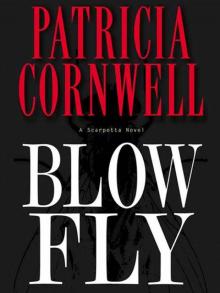 Blow Fly
Blow Fly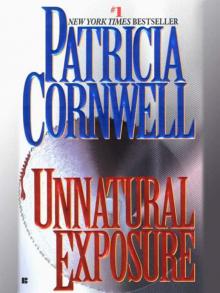 Unnatural Exposure
Unnatural Exposure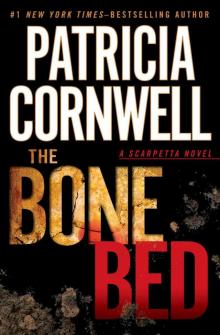 The Bone Bed
The Bone Bed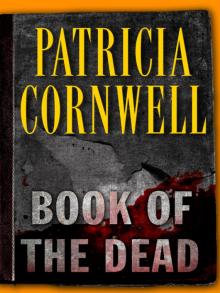 Book of the Dead
Book of the Dead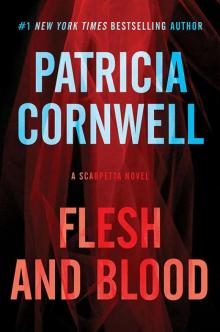 Flesh and Blood: A Scarpetta Novel (Scarpetta Novels Book 22)
Flesh and Blood: A Scarpetta Novel (Scarpetta Novels Book 22)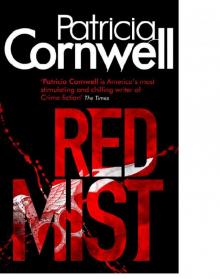 Red Mist
Red Mist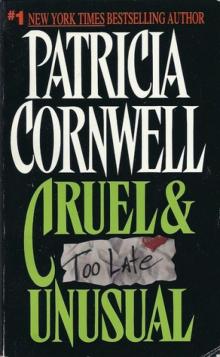 Cruel & Unusual
Cruel & Unusual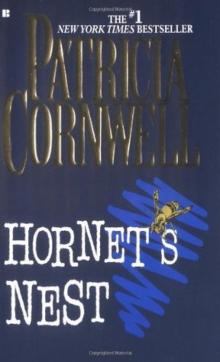 Hornet's Nest
Hornet's Nest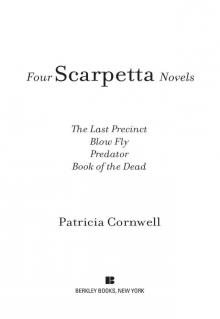 Four Scarpetta Novels
Four Scarpetta Novels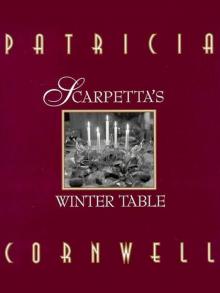 Scarpetta's Winter Table
Scarpetta's Winter Table Isle of Dogs
Isle of Dogs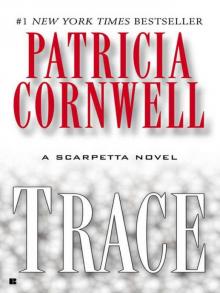 Trace
Trace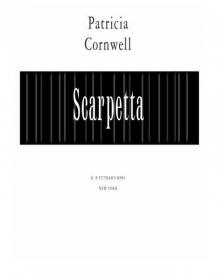 Postmortem
Postmortem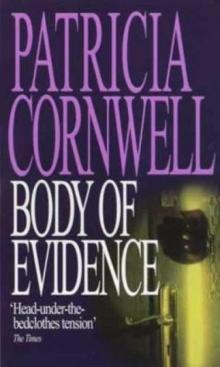 Body of Evidence ks-2
Body of Evidence ks-2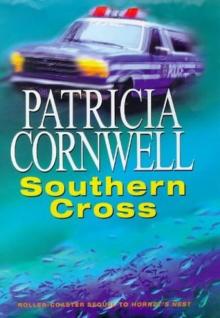 Southern Cross
Southern Cross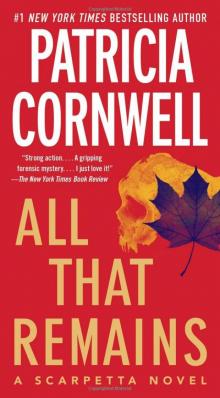 All That Remains
All That Remains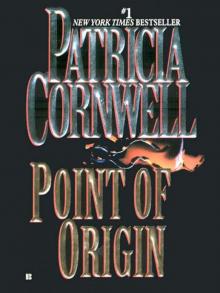 Point of Origin
Point of Origin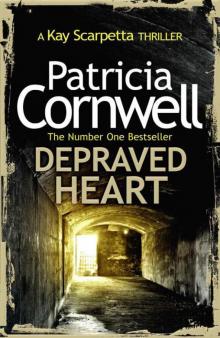 Depraved Heart
Depraved Heart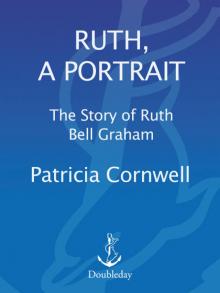 Ruth, a Portrait: The Story of Ruth Bell Graham
Ruth, a Portrait: The Story of Ruth Bell Graham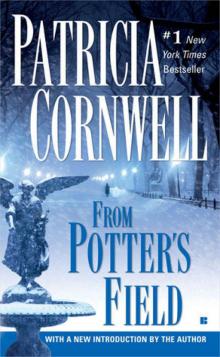 From Potter's Field
From Potter's Field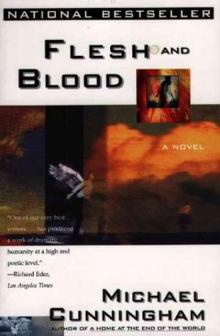 Flesh and Blood
Flesh and Blood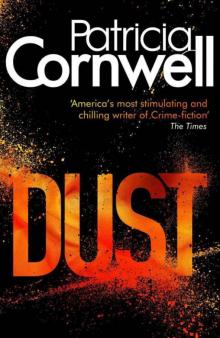 Dust
Dust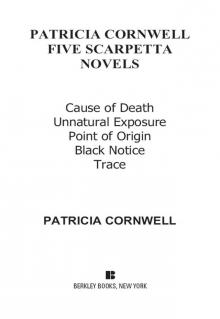 The Body Farm
The Body Farm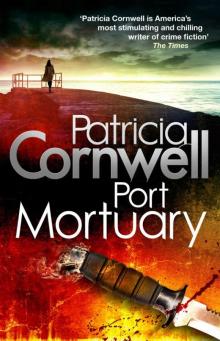 Port Mortuary
Port Mortuary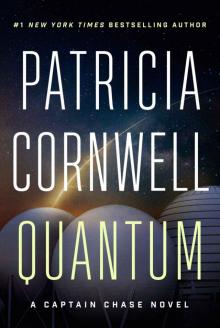 Quantum
Quantum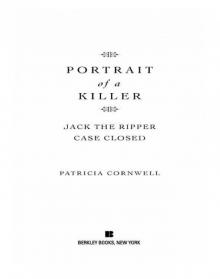 Portrait of a Killer: Jack the Ripper - Case Closed
Portrait of a Killer: Jack the Ripper - Case Closed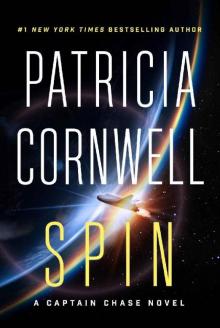 Spin (Captain Chase)
Spin (Captain Chase)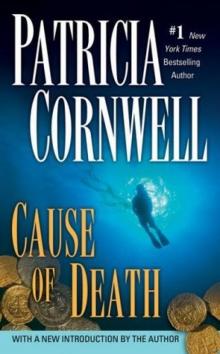 Cause of Death
Cause of Death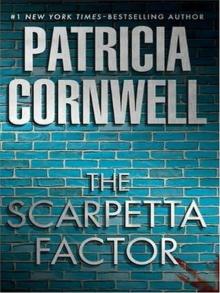 The Scarpetta Factor
The Scarpetta Factor Predator
Predator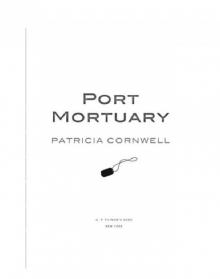 Scarpetta 18 - Port Mortuary
Scarpetta 18 - Port Mortuary Trace ks-13
Trace ks-13 Portrait of a Killer
Portrait of a Killer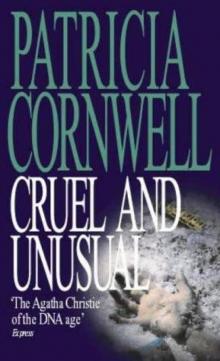 Cruel and Unusual ks-4
Cruel and Unusual ks-4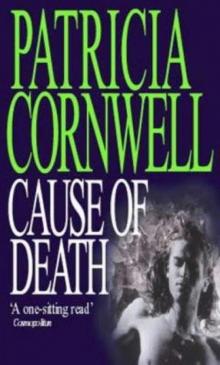 Cause Of Death ks-7
Cause Of Death ks-7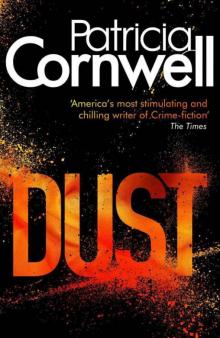 Dust ks-21
Dust ks-21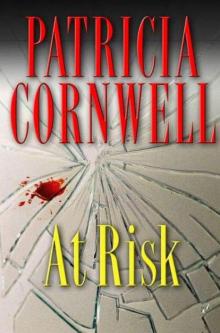 At Risk wg-1
At Risk wg-1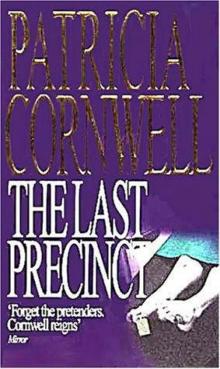 The Last Precinct ks-11
The Last Precinct ks-11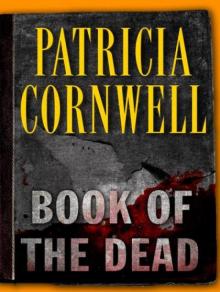 Book of the Dead ks-15
Book of the Dead ks-15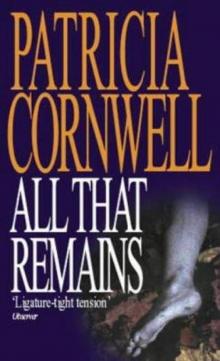 All That Remains ks-3
All That Remains ks-3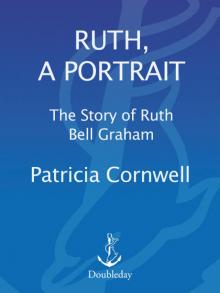 Ruth, a Portrait
Ruth, a Portrait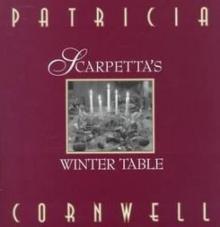 Scarpetta's Winter Table (kay scarpetta)
Scarpetta's Winter Table (kay scarpetta)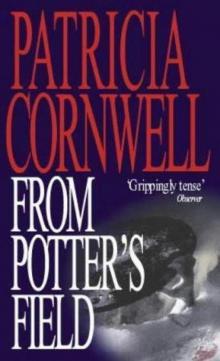 From Potter's Field ks-6
From Potter's Field ks-6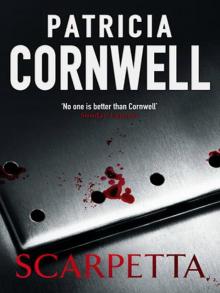 Scarpetta
Scarpetta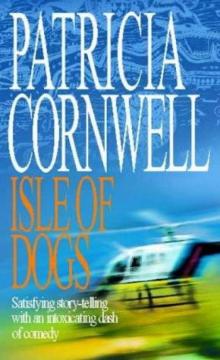 Isle of Dogs jhabavw-3
Isle of Dogs jhabavw-3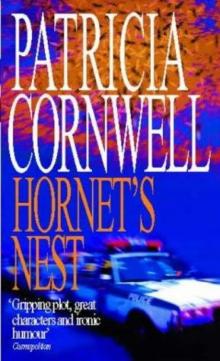 Hornet's Nest jhabavw-1
Hornet's Nest jhabavw-1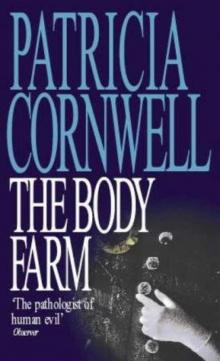 The Body Farm ks-5
The Body Farm ks-5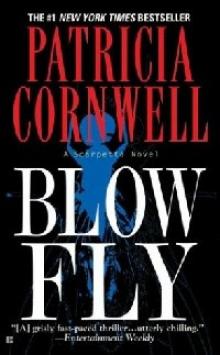 Blow Fly ks-12
Blow Fly ks-12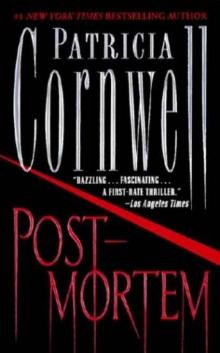 Post Mortem
Post Mortem Five Scarpetta Novels
Five Scarpetta Novels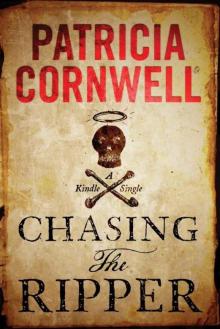 Chasing the Ripper (Kindle Single)
Chasing the Ripper (Kindle Single)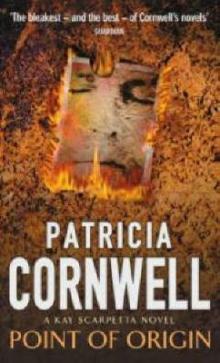 Point of Origin ks-9
Point of Origin ks-9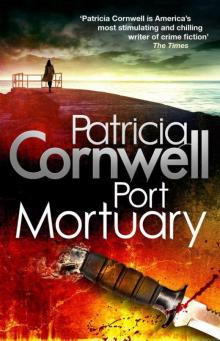 Port Mortuary (2010)
Port Mortuary (2010)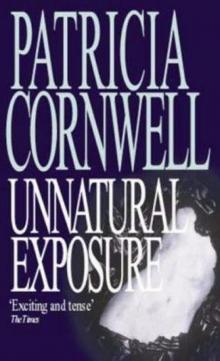 Unnatural Exposure ks-8
Unnatural Exposure ks-8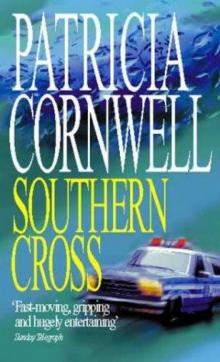 Southern Cross uhabavw-2
Southern Cross uhabavw-2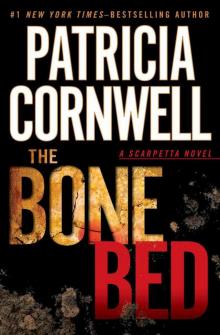 The Bone Bed ks-20
The Bone Bed ks-20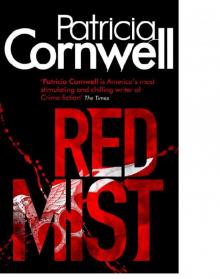 Red Mist ks-19
Red Mist ks-19 Port Mortuary (2010) ks-18
Port Mortuary (2010) ks-18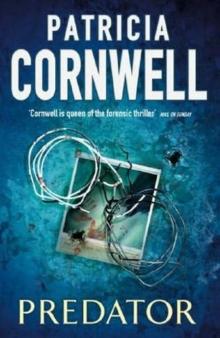 Predator ks-14
Predator ks-14